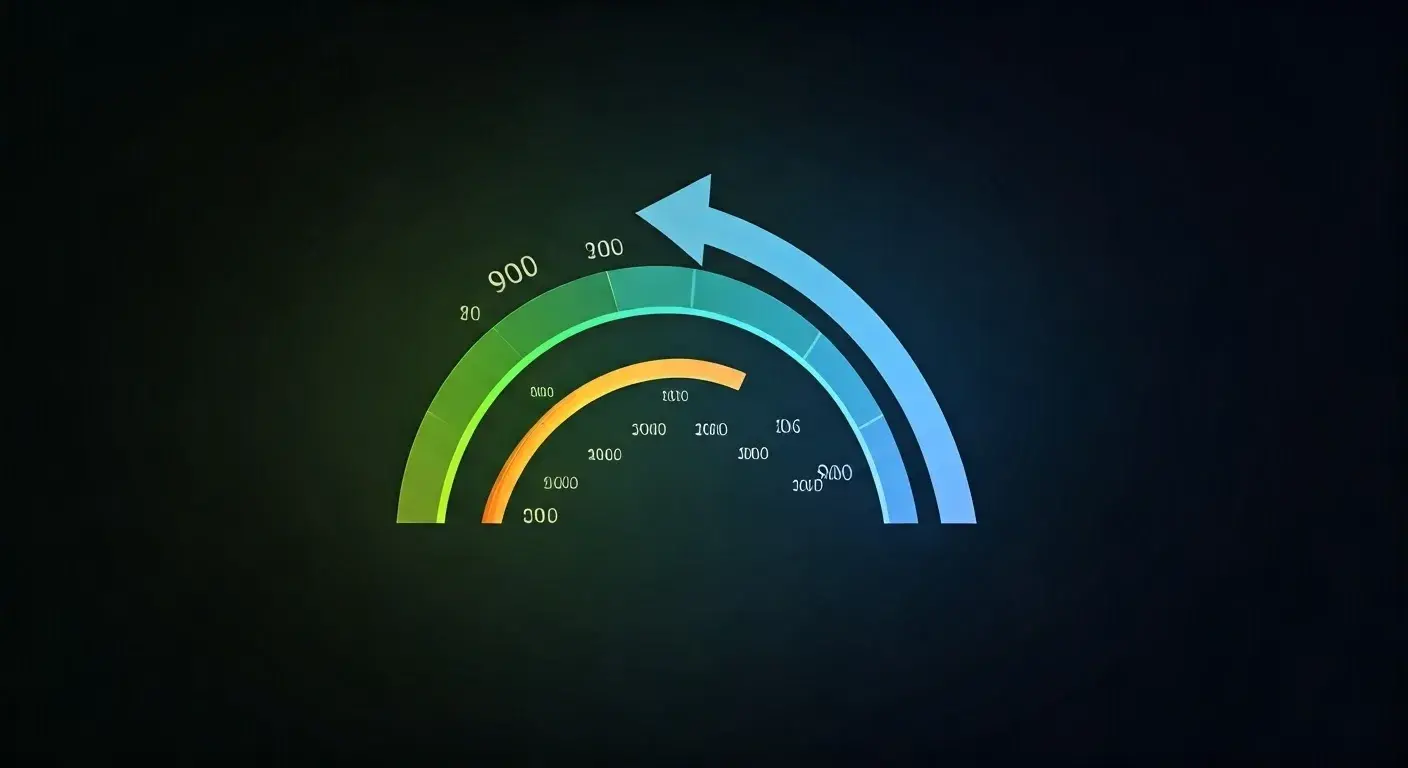-
Posted on: 15 Jul 2024

-
A credit score of 560 is generally considered to be in the "poor" or "bad" credit range. While it might seem daunting, recovering from a 560 credit score is absolutely possible. It requires a strategic and consistent approach, but with the right steps, you can significantly improve your creditworthiness and access better financial opportunities.
Understanding the Impact of a 560 Credit Score
Before diving into the recovery process, it's important to understand the implications of having a 560 credit score. This score can affect various aspects of your financial life:
- Difficulty obtaining loans: Lenders are less likely to approve loan applications with a poor credit score, and if they do, the interest rates will likely be significantly higher.
- Higher interest rates on credit cards: You may only qualify for credit cards with high APRs, making it more expensive to carry a balance.
- Challenges renting an apartment: Landlords often check credit scores as part of the application process. A poor score can make it harder to find a place to live.
- Higher insurance premiums: Some insurance companies use credit scores to determine premiums. A lower score could result in higher costs for car or homeowners insurance.
- Difficulty getting approved for utilities: Utility companies may require a larger deposit or deny service altogether based on your credit score.
- Potential employment challenges: Some employers check credit scores as part of the hiring process, particularly for positions involving financial responsibility.
The Credit Scoring Factors: What Impacts Your Score?
To effectively improve your credit score, you need to understand the factors that influence it. The most commonly used scoring model is FICO, which considers these factors:
- Payment History (35%): This is the most significant factor. Making on-time payments on all your credit accounts is crucial.
- Amounts Owed (30%): This refers to the amount of debt you owe compared to your available credit (credit utilization). Keeping your credit utilization below 30% is generally recommended.
- Length of Credit History (15%): A longer credit history generally leads to a better score.
- Credit Mix (10%): Having a mix of different types of credit (e.g., credit cards, installment loans) can positively impact your score.
- New Credit (10%): Opening multiple new accounts in a short period can lower your score.
Step-by-Step Guide to Recovering from a 560 Credit Score
Here's a detailed plan to help you improve your credit score and move towards a healthier financial future:
1. Obtain and Review Your Credit Reports
The first step is to get a copy of your credit reports from all three major credit bureaus: Experian, Equifax, and TransUnion. You can obtain a free copy of your report from AnnualCreditReport.com.
- Identify Errors: Carefully review your credit reports for any inaccuracies, such as incorrect account balances, late payments that were actually made on time, or accounts that don't belong to you.
- Dispute Errors: If you find any errors, dispute them with the credit bureau directly. Each credit bureau has its own process for submitting disputes. You'll need to provide documentation to support your claim.
2. Create a Budget and Manage Your Debt
Effective debt management is crucial for improving your credit score. Start by creating a budget to understand your income and expenses.
- Track Your Spending: Use budgeting apps, spreadsheets, or pen and paper to track your income and expenses.
- Identify Areas to Cut Back: Look for areas where you can reduce spending and allocate more money towards debt repayment.
- Prioritize Debt Repayment: Focus on paying down high-interest debt first. The debt snowball method (paying off the smallest debt first) or the debt avalanche method (paying off the highest interest debt first) can be effective strategies.
3. Make On-Time Payments Consistently
Payment history is the most critical factor in your credit score. Even a single late payment can have a negative impact.
- Set Up Payment Reminders: Use calendar reminders, phone alerts, or automatic payments to ensure you never miss a due date.
- Consider Autopay: Enroll in autopay for your credit cards and other bills to avoid accidental late payments. Ensure you have sufficient funds in your account to cover the payments.
4. Reduce Your Credit Utilization Ratio
Credit utilization is the amount of credit you're using compared to your total available credit. Aim to keep your credit utilization below 30% on each card and overall.
- Pay Down Balances: The most effective way to reduce your credit utilization is to pay down your credit card balances.
- Request a Credit Limit Increase: If possible, request a credit limit increase from your credit card issuer. This will increase your available credit and lower your utilization ratio, even if you don't spend more.
- Open a New Credit Card (Carefully): Opening a new credit card can increase your overall available credit, but do so cautiously. Avoid opening too many new accounts in a short period, as this can negatively affect your score. Look for cards designed for people with fair or bad credit.
5. Consider Secured Credit Cards
A secured credit card requires you to make a security deposit, which typically serves as your credit limit. Secured cards are often easier to obtain than traditional credit cards, even with a poor credit score. They are a great way to demonstrate responsible credit usage.
- Make Timely Payments: Just like with any credit card, make sure to pay your secured credit card bills on time and in full.
- Graduate to an Unsecured Card: After a period of responsible use (typically 6-12 months), you may be able to graduate to an unsecured credit card and have your security deposit returned.
6. Become an Authorized User on a Credit Card
Ask a trusted friend or family member with good credit if you can become an authorized user on their credit card. Their positive payment history can help improve your credit score, as long as the card issuer reports authorized user activity to the credit bureaus.
- Choose Wisely: Select a cardholder with a long credit history, low credit utilization, and a consistent record of on-time payments.
- Consider the Risks: Be aware that the cardholder's spending habits can also affect your credit score. If they miss payments or have high credit utilization, it could negatively impact your credit.
7. Explore Credit-Builder Loans
Credit-builder loans are designed to help people with little or no credit history establish or rebuild credit. With these loans, you make payments to the lender, and they report your payment activity to the credit bureaus.
- How They Work: Typically, the loan proceeds are held in a savings account until you've finished making all the payments. Then, you receive the funds.
- Look for Reputable Lenders: Check with local credit unions or community banks to find credit-builder loan programs.
8. Avoid Payday Loans and Title Loans
Payday loans and title loans are short-term, high-interest loans that can be extremely difficult to repay. They can trap you in a cycle of debt and negatively impact your credit score.
9. Be Patient and Persistent
Improving your credit score takes time and effort. Don't get discouraged if you don't see results immediately. Continue to follow these steps consistently, and you'll gradually see your credit score improve.
10. Monitor Your Credit Score Regularly
Track your progress by monitoring your credit score regularly. Many credit card companies and financial institutions offer free credit score monitoring services. This will allow you to see how your efforts are paying off and identify any potential issues early on.
The Timeline for Recovery
The time it takes to recover from a 560 credit score varies depending on your individual circumstances, including the severity of your past credit mistakes and your commitment to improving your financial habits. However, with consistent effort, you can expect to see noticeable improvements within 6-12 months. Significant improvements, enough to move you into the "fair" or even "good" credit range, may take 1-2 years or longer. Patience and persistence are key.
Maintaining Good Credit After Recovery
Once you've successfully rebuilt your credit, it's important to maintain good credit habits to prevent your score from slipping again.
- Continue making on-time payments.
- Keep your credit utilization low.
- Monitor your credit reports regularly.
- Avoid opening too many new credit accounts.











